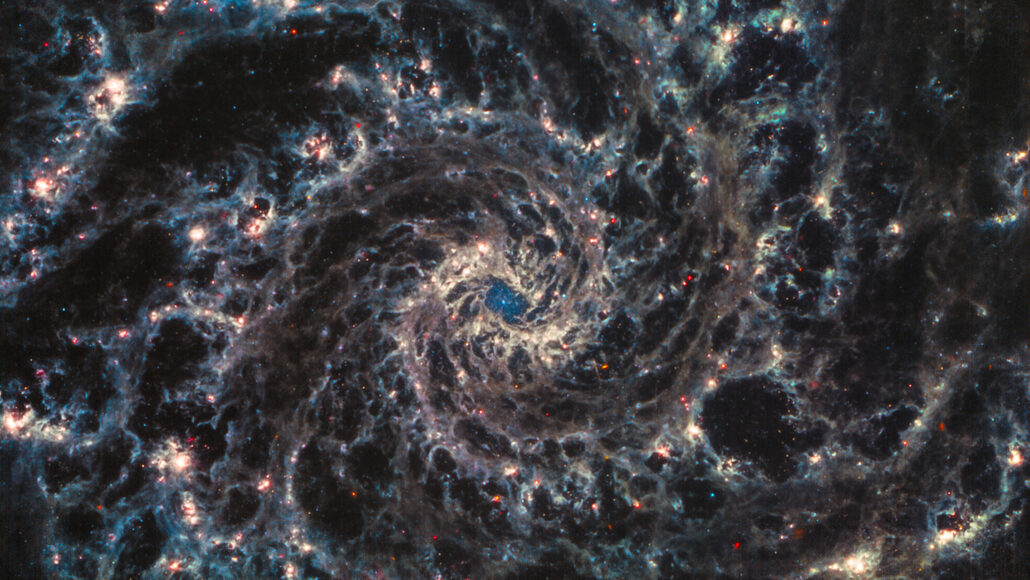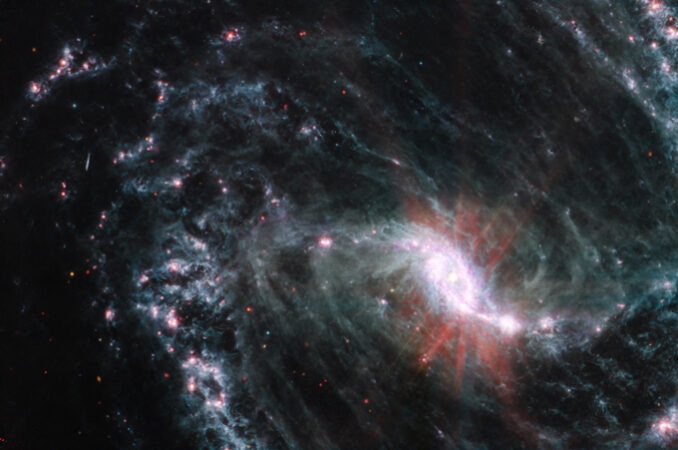astronomer: A scientist who works in the field of research that deals with celestial objects, space and the physical universe.
colleague: Someone who works with another; a co-worker or team member.
cosmic: An adjective that refers to the cosmos — the universe and everything within it.
environment: The sum of all of the things that exist around some organism or the process and the condition those things create. Environment may refer to the weather and ecosystem in which some animal lives, or, perhaps, the temperature and humidity (or even the placement of things in the vicinity of an item of interest).
insight: The ability to gain an accurate and deep understanding of a situation just by thinking about it, instead of working out a solution through experimentation.
journal: (in science) A publication in which scientists share their research findings with experts (and sometimes even the public). Some journals publish papers from all fields of science, technology, engineering and math, while others are specific to a single subject. Peer-reviewed journals are the gold standard: They send all submitted articles to outside experts to be read and critiqued. The goal, here, is to prevent the publication of mistakes, fraud or work that is not novel or convincingly demonstrated.
life cycle: The succession of stages that occur as an organism grows, develops, reproduces — and then eventually ages and dies. Or the sum of all processes involved in creating a product, starting with the extraction of raw materials and ending with the disposal of the product when it's no longer useful. Indeed, engineers describe this as the cradle-to-grave life of a product.
light-year: The distance light travels in one year, about 9.46 trillion kilometers (almost 6 trillion miles). To get some idea of this length, imagine a rope long enough to wrap around the Earth. It would be a little over 40,000 kilometers (24,900 miles) long. Lay it out straight. Now lay another 236 million more that are the same length, end-to-end, right after the first. The total distance they now span would equal one light-year.
Milky Way: The galaxy in which Earth’s solar system resides.
radiation: (in physics) One of the three major ways that energy is transferred. (The other two are conduction and convection.) In radiation, electromagnetic waves carry energy from one place to another. Unlike conduction and convection, which need material to help transfer the energy, radiation can transfer energy across empty space.
standards: (in research) The values or materials used as benchmarks against which other things can be compared. For instance, clocks attempt to match the official standard benchmark of time — the second, as calculated by the official atomic clock. Similarly, scientists look to identify a chemical by matching its properties against a known standard for a particular chemical.
star: The basic building block from which galaxies are made. Stars develop when gravity compacts clouds of gas. When they become hot enough, stars will emit light and sometimes other forms of electromagnetic radiation. The sun is our closest star.
telescope: Usually a light-collecting instrument that makes distant objects appear nearer through the use of lenses or a combination of curved mirrors and lenses. Some, however, collect radio emissions (energy from a different portion of the electromagnetic spectrum) through a network of antennas.
void: An empty space or cavity.









